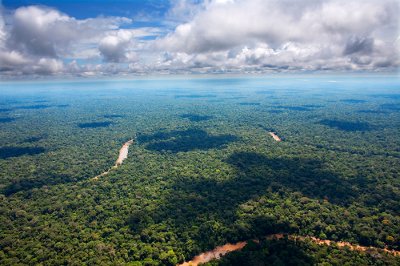Living Systems Lessons for Networks
January 16, 2013 Leave a comment
I was recently turned on to the work of Louise Diamond by the Plexus Institute. Diamond has been bringing insights from the dynamics of complex systems to peace building work for many years. Her efforts connect to a growing number of practitioners and thinkers who see the need to approach social change with an ecological and evolutionary mindset. In one of her papers, she extracts some of the “simple rules” that yield core practices for working in this way. Here I have adapted and adjusted some of them in application to network building for food systems change.
Connect the disconnected
- Engage those who do not have adequate access to healthy food, information, resources, power
- Connect local producers more directly to local consumers
- Create stronger connections between different parts of the region (rural-suburban-urban, municipality to municipality, state to state)
- Engage and connect different disciplinary (production, health, economic, ecology, etc.) and cultural perspectives on food
Ground yourself in unpredictability
- Refrain from trying to be THE expert when it comes to food system change
- Give up pursuit of THE (single) answer; be wiling to fail; prototype, learn and adjust
- Foster flexibility, nimbleness, resilience, cooperation, and creativity within and between business, government and civil society stakeholders
Create conditions for quality interactions to strengthen connections
- Convene and host different food system stakeholders
- Weave the network of food system stakeholders, make critical connections, “close triangles”
- Engage in dialogue rather than simply debate; make time and space for listening and relationship building
Re-balance flows across boundaries
- Encourage more interactions and exchanges (goods, services, information, financial)
- Create/free up more channels for interaction and exchange that lend value to undervalued resources and perspectives
- Build/distribute power and capacity to participate in and shape new food systems
Re-pattern for sustainability and the well-being of the whole
- Shift patterns of exchange and interaction for greater redundancy, diversity, feedback loops, resource recapture, ecological integrity, etc.
- Build on strengths; support the core purpose and essence of communities, states, regions, ecosystems
- Measure what matters most for wholeness and regenerativity, not just what we can
Attend to the nested nature of systems
- Focus on the health and wholeness of individuals, families, communities, states, region, etc.
Pay attention to existing and emerging networks
- Strengthen/leverage existing and promising networks and patterns of relationship
- Look to the “edges” and periphery of the network, not just the center or “steering” bodies
Seek coherence in chaos, emergence in dissolution
- Look for innovations and the seeds of new ideas to feed and connect
Look to the intangible as well as the concrete
- Surface attitudes, stories, assumptions, worldviews
- Define and revisit systemic purpose and goals
- Tell new stories that align with a more holistic and regenerative purpose
Wondering if this resonates and what you might add?
No Comments
These are so useful Curtis – but how to keep so much in mind? How to change so much?Specially when so much of the so much is counter to the industrial paradigm that has conditioned us so thoroughly?
I would invite participants in the system to focus on up to three pivots from the list above. I would not demand consensus, different “nodes” could focus on different pivots, allowing for a diversity of experiments within the network.
Even more important, is the realization that all of these fit within a different paradigm, they become possible at a higher stage of development. The big question then is, what do we have to do so that more of us can make the necessary interior shifts that will allow us to thrive in the emergent paradigm that is outlined above.
Once that shift happens, then we worry less about choosing pivots because they all come more naturally to people who have come to see the world through a different lens.
Here, again we worry less about getting everyone to shift, we work with those who are ready and they become the attractor for the rest.